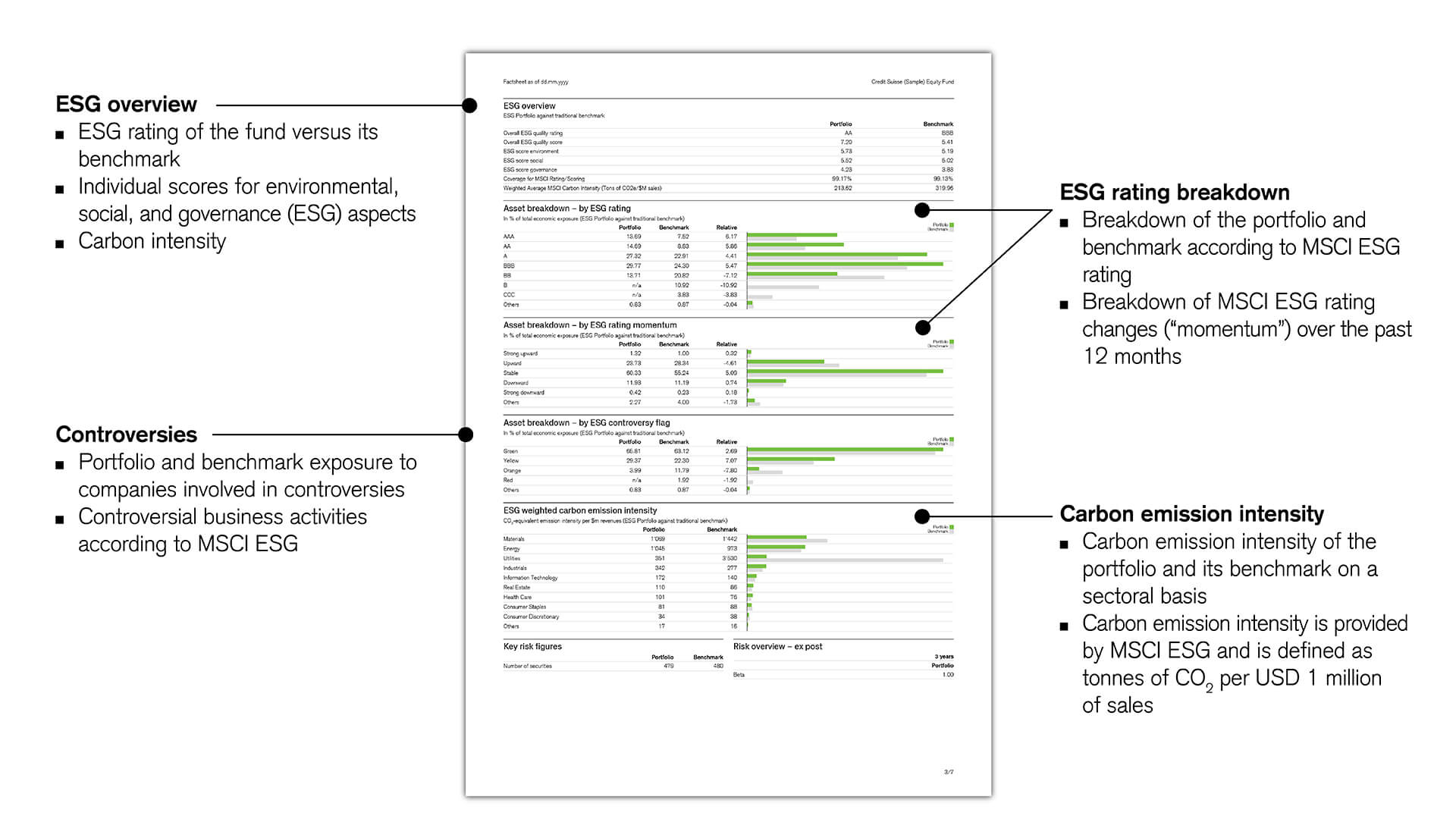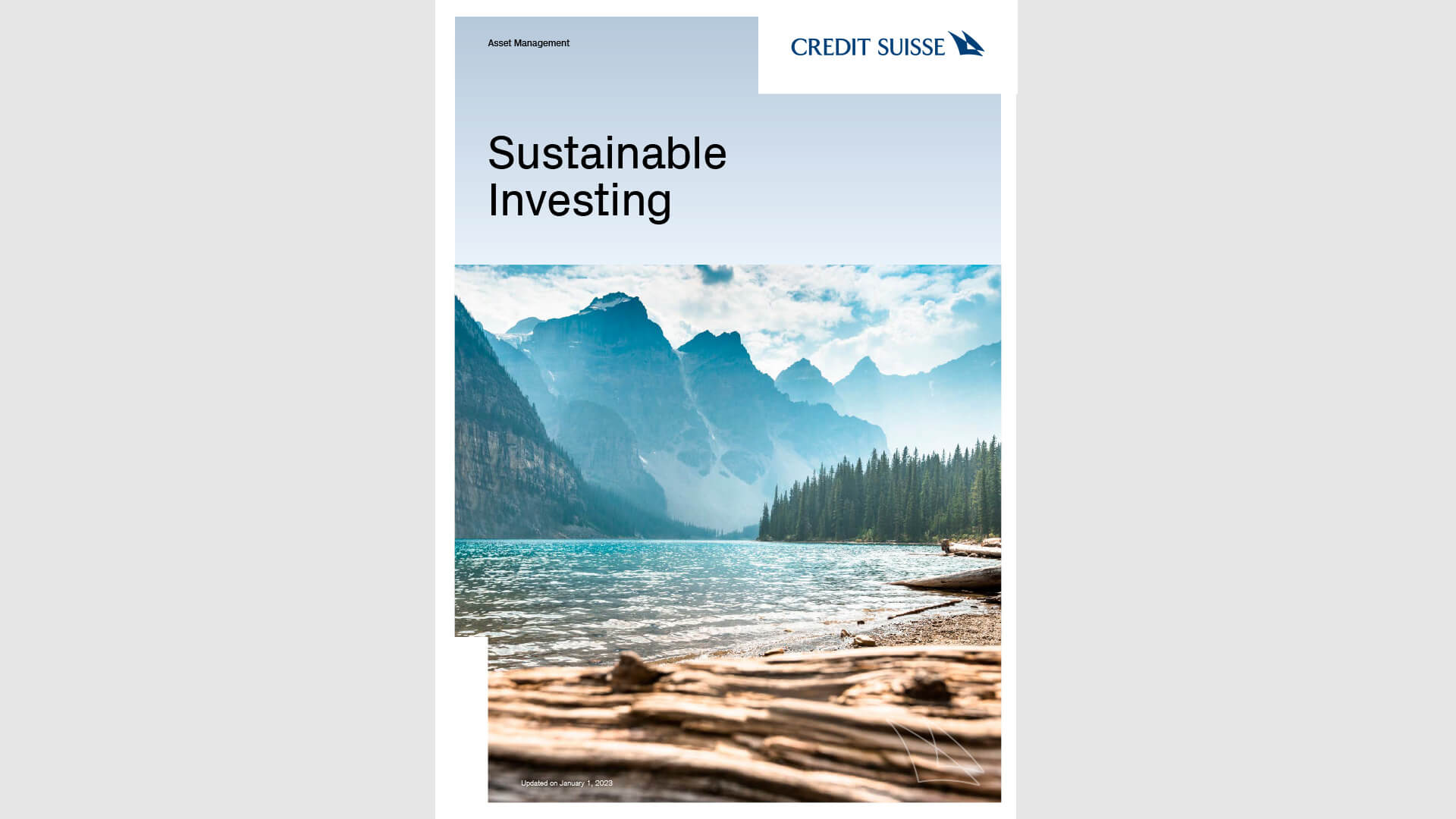According to Art. 2(17) of the SFDR, Sustainable Investments are investments in companies that follow good governance practices, and whose activities contribute to an environmental or social objective without causing significant harm to any other environmental or social objectives.
For EU-domiciled investment funds, Credit Suisse Asset Management assesses the proportion of SFDR Sustainable Investments and reports on them in the annual report, unless stated otherwise in the product legal documentation.
Credit Suisse has defined a quantitative methodology to identify investments which qualify as SFDR Sustainable Investments. This methodology is systematically applied to all investment funds. In addition, Credit Suisse may classify investments as SFDR Sustainable Investments based on a qualitative case-by-case assessment.
Quantitative methodology for equity and fixed income investments
SFDR Sustainable Investments need to meet each of the following three requirements.
1. Contribution to environmental or social objective
To meet the condition to contribute to an environmental or social objective, CS will either consider:
- Investments that generate at least 50% of their revenues from products and services that contribute to an environmental objective (e.g. key resource efficiency indicators on the use of energy, renewable energy, raw materials, water, and land, etc.) or a social objective (e.g., major disease treatment, tackling inequality or fostering social cohesion, social integration, and labor relations), or
- Investments that have an approved commitment to science-based emission targets and an average reduction in carbon emissions intensity of 7% over the last three years, or
- Investments in securities whose proceeds pursue a predefined environmental or social objective (e.g. green bonds).
2. No significant harm
SFDR Sustainable Investments cannot significantly harm any environmental or social objectives – i.e. they must follow the Do Not Significant Harm (DNSH) principle. To assess if the DNSH requirement is met, Credit Suisse makes use of PAI indicators and further indicators from our ESG Exclusion framework. Credit Suisse has defined a set of criteria and thresholds to determine if an investment meets the DNSH requirement (e.g., investments with exposure to controversial weapons or those deriving more than 20% of revenues from coal mining and coal-based electricity generation do not meet the DNSH requirement). Note that the consideration of PAI as described in section 2.2 may differ from the usage of PAI for the purpose of DNSH. For example, post-trade tools such as proxy voting may be used to consider PAI in the context of section 2.2 but may not be relevant to the question if an investment currently causes significant harm.
3. Good governance practice
SFDR Sustainable Investments are in companies that exhibit good governance practice. In contrast to good governance described in section 2.3, the assessment based on the SFDR Sustainable Investment definition focuses on the current situation irrespective of the potential measures a company may take in the future to ensure improvements in its governance. The result of the assessment is either yes or no. Credit Suisse relies on investee company’s overall ESG performance (measured by the Sustainability Indicator “ESG rating”) and its governance performance (measured by the Sustainability Indicator “Governance Pillar Score”) to assess good governance. These measures provide a holistic view of the investee company’s ability to manage resources, including human capital, to ensure operational integrity based on strong management practices and to comply with applicable norms, including tax laws.
Quantitative methodology for direct real estate investments
SFDR Sustainable Investments need to meet each of the following three requirements
1. Contribution to environmental or social objective
To meet the requirement of contributing to an environmental or social objective, Credit Suisse will either consider:
- Investments that have at least a LEED rating “gold” or BREEAM rating “very good” or DGNB (resp. SGNI) “Gold” or higher, or
- Investments that have an Energy Star rating of 75 or higher.
2. No significant harm
SFDR Sustainable Investments may not significantly harm any environmental or social objectives (DNSH). To assess if the DNSH requirement is met, Credit Suisse makes use of the PAI Indicators related to real estate regarding the exposure to fossil fuels through real estate assets and energy-inefficient real estate assets.
3. Good governance practice
While Good Governance for real estate assets cannot be assessed on the real estate asset level itself, Credit Suisse Asset Management engages with external counterparties and/or service providers during the acquisition, holding, and disposal of the asset. Credit Suisse Asset Management has controls and processes in place to ensure that those external counterparties and/or service providers (such as operating partners and developers) that exceed a certain order volume are subject to proper due diligence review for good governance purposes.
Limitations of quantitative methodology
There are diverging definitions and methodologies used in the industry to define SFDR Sustainable Investments. The extension of the EU Taxonomy is expected to bring further clarity and consensus on this topic. For green bonds, DNSH is assessed on individual project level and not on the issuer entity level. Good Governance practices may not be assessed for investments in securities issued by sovereigns or supranational entities. For investments in third-party investment funds, Credit Suisse Asset Management may use the latest publicly reported percentage of SFDR Sustainable Investments of such a third-party investment fund if available. These reported percentages are calculated using the methodology of the third-party investment fund manager and may differ from the methodology explained above.
The methodology to identify SFDR Sustainable Investments makes use of ESG data that may not be reliable or in certain cases not available from underlying investments. To address shortcomings of this quantitative methodology, a qualitative case-by-case assessment to classify an investment as SFDR Sustainable Investment may be applied. The rationale supporting a case-by-case assessment needs to be verified and approved by a central Credit Suisse Group committee.

